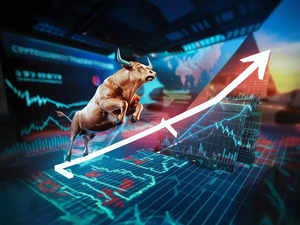NFT Marketplace Trends: Evolving Beyond the Hype
The NFT market has certainly seen its share of ups and downs. While 2021 saw a surge in popularity, recent months have shown a correction. Yet, amidst this evolution, NFT marketplaces are adapting and innovating, hinting at exciting trends for the future.
Here's a glimpse into what's shaping the NFT marketplace landscape:
Shifting Focus: While digital art remains a mainstay, we're seeing a rise in utility-driven NFTs. These NFTs offer real-world benefits, like exclusive content, access to events, or even ownership rights in physical assets. This trend is likely to expand, as creators explore new ways to engage their audience.
Gaming Integration: The play-to-earn model, where players can earn NFTs through gameplay, is gaining traction. This is fostering deeper connections between gamers and in-game assets, potentially revolutionizing the gaming industry.
Beyond Ethereum: High gas fees on the Ethereum blockchain have led to the rise of alternative platforms like Solana and Polygon. These offer faster transaction speeds and lower costs, making them attractive options for creators and collectors.
Focus on Security and Regulation: With the growth of the market comes a growing focus on security and regulation. NFT marketplaces are implementing stricter measures to prevent fraud and scams, building trust and legitimacy for the long run.
Evolving User Experience: User-friendliness is key to broader adoption. Marketplaces are prioritizing intuitive interfaces, streamlined buying and selling processes, and educational resources to make the NFT space more accessible.
The NFT market is still young, and its future trajectory remains to be seen. However, these trends indicate a shift towards a more sustainable and utility-driven ecosystem. As security, usability, and real-world applications take center stage, NFT marketplaces have the potential to unlock exciting new possibilities for creators, collectors, and various industries.
The Future of NFT Marketplaces: A Look Ahead
Building on the current trends, here's a look at what the future might hold for NFT marketplaces:
Metaverse Integration: As the metaverse concept continues to develop, NFT marketplaces are likely to play a crucial role. Imagine buying virtual land or unique avatars as NFTs to use across different metaverse platforms. This convergence could create a thriving virtual economy.
Fractional Ownership: Making expensive NFTs more accessible, fractional ownership allows multiple people to co-own an NFT. This could democratize access to high-value digital assets and potentially increase liquidity in the market.
NFT Lending and Borrowing: Similar to traditional finance, NFT marketplaces might introduce lending and borrowing options. This would allow NFT holders to unlock value from their assets without selling them entirely.
Focus on Sustainability: The environmental impact of blockchain technology is a growing concern. NFT marketplaces are exploring ways to minimize their carbon footprint, potentially through energy-efficient protocols and offset programs.
Evolving Creator Tools: Marketplaces are likely to provide creators with sophisticated tools for managing their NFT collections, building communities, and interacting with fans. This will empower creators to further leverage the potential of NFTs.
The NFT marketplace landscape is constantly evolving, presenting both challenges and opportunities. By embracing innovation, prioritizing security, and fostering a user-centric approach, these platforms can play a significant role in shaping the future of digital ownership and creative expression.





No comments:
Post a Comment